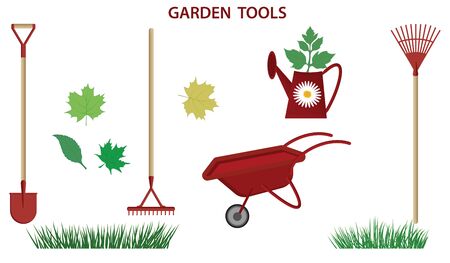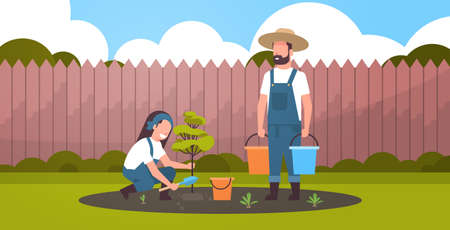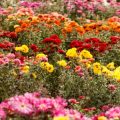1. Understanding the Importance of Native Bees
When most Americans think of bees, the European honeybee often comes to mind. While honeybees are essential for agriculture, theyre not native to North America. In fact, native bees—like bumblebees, mason bees, and leafcutter bees—have been pollinating North American plants for millions of years. These unsung heroes play a crucial role in keeping our gardens vibrant and our food supply diverse.
Why Native Bees Matter
Native bees are incredibly efficient pollinators. Many crops grown in American gardens and farms—such as tomatoes, blueberries, squash, and cranberries—benefit more from native bee pollination than from honeybees. Some native species even specialize in pollinating certain plants, making them irreplaceable in local ecosystems.
Key Differences Between Native Bees and Honeybees
| Feature | Native Bees | European Honeybees |
|---|---|---|
| Origin | North America | Europe (non-native) |
| Nesting Habits | Solitary (most species), ground or cavity nesters | Colonial hives with thousands of individuals |
| Pollination Efficiency | High; often better suited to native plants | Moderate; generalist pollinators |
| Aggressiveness | Generally non-aggressive | Can be defensive around hives |
| Honey Production | No (do not produce harvestable honey) | Yes (used in commercial honey production) |
The Impact on Gardens and Ecosystems
Without native bees, many wildflowers wouldnt get pollinated, leading to fewer seeds and less biodiversity. In home gardens, the absence of native bees can mean lower yields for certain fruits and vegetables. Since these bees have co-evolved with local plant species, they are uniquely adapted to their needs.
A Closer Look at a Few Native Bee Species:
- Bumblebees: Known for their ability to buzz-pollinate crops like tomatoes and peppers.
- Mason Bees: Excellent early spring pollinators for fruit trees such as apples and cherries.
- Leafcutter Bees: Efficient at pollinating summer-blooming flowers and veggies.
If youre a gardener in the U.S., understanding the value of these native insects is the first step toward helping protect them—and your gardens productivity.
2. Common Threats Endangering Native Bee Populations
Native bees play a crucial role in pollinating many of the fruits, vegetables, and flowers found in American gardens. However, their populations are rapidly declining due to several key threats. Understanding these dangers can help gardeners take informed steps to protect these essential pollinators.
Habitat Loss
One of the biggest threats to native bees is habitat destruction. As cities expand and farmland replaces natural landscapes, native bees lose the nesting areas and food sources they rely on. Lawns, paved surfaces, and monoculture crops offer little in terms of forage or shelter for wild bees.
Examples of Habitat Destruction:
| Type of Change | Impact on Bees |
|---|---|
| Urban development | Reduces wildflower availability and nesting sites |
| Large-scale agriculture | Replaces diverse habitats with single-crop fields |
| Lawn-dominated landscapes | Offer minimal nectar and pollen resources |
Pesticide Use
Chemicals used to control pests can also harm native bees. Even products labeled as “bee-friendly” may have sub-lethal effects that impair bee navigation, reproduction, or immune systems. Neonicotinoids are especially harmful, as they are absorbed by plants and remain toxic throughout the plants life cycle.
Common Harmful Pesticides:
| Pesticide Type | Effect on Bees |
|---|---|
| Neonicotinoids | Affects bee nervous systems and behavior |
| Pyrethroids | Toxic to bees upon contact or ingestion |
| Fungicides (some types) | Disrupt gut microbes essential to bee health |
Climate Change
Changes in temperature and weather patterns affect when flowers bloom and when bees emerge from hibernation. If these events fall out of sync, bees may not find enough food during critical stages of their life cycle. Climate change can also shift the range of plants and pollinators, making it harder for native bees to survive in their traditional habitats.
Key Climate Impacts:
- Mismatched timing between bee activity and flower availability
- Drought reducing nectar-producing plants
- Extreme weather events destroying habitats or disrupting bee life cycles
Disease and Parasites
Native bees are increasingly threatened by diseases and parasites, some of which spread from domesticated honeybees. Pathogens like Nosema or viruses can weaken native bee populations, while parasitic mites can devastate entire colonies.
Main Disease-Related Threats:
| Disease/Parasite | Description |
|---|---|
| Nosema fungus | Affects digestion and energy levels in bees |
| Varroa mites (indirectly) | Mainly target honeybees but can spread viruses to native species through shared flowers |
| Deformed Wing Virus (DWV) | Leads to physical deformities; often transmitted via mites from managed hives |
The combined impact of these threats has led to steep declines in many native bee species across the United States. By learning about these challenges, gardeners can make smarter choices that support healthy bee populations in their own backyards.

3. How American Gardening Practices Can Help or Harm
Many gardeners dont realize how much their everyday choices can impact native bees—for better or worse. From the types of plants you grow to how you maintain your lawn, your yard plays a big role in supporting (or endangering) these essential pollinators.
Plant Selection: Native vs. Non-Native
Native bees have evolved alongside native plants, which means they rely on them for food and habitat. Choosing native plants not only supports bee health but also strengthens your local ecosystem.
| Plant Type | Impact on Native Bees |
|---|---|
| Native Plants | Provide appropriate nectar, pollen, and nesting sites; bloom at the right time for local bee species. |
| Non-Native Ornamentals | May offer little to no food value; can displace beneficial native species. |
| Invasive Species | Can crowd out native plants and disrupt bee feeding patterns. |
Lawn Maintenance: Rethinking the Perfect Lawn
The typical well-manicured American lawn may look neat, but it often functions as a “green desert” to native bees—offering very little in terms of food or habitat. Consider letting part of your lawn go wild with clover or native ground covers that benefit pollinators.
Tips for Bee-Friendly Lawns:
- Limit mowing to allow flowering weeds like dandelions and clover to bloom.
- Avoid using synthetic fertilizers that can harm soil life and reduce plant diversity.
- Create “no-mow” zones with native grasses and wildflowers.
Pesticide Use: Hidden Dangers
Pesticides—especially neonicotinoids—pose a major threat to native bees. Even small amounts can impair navigation, reproduction, and immunity. Many products marketed as “bee-safe” still contain harmful ingredients, so always read labels carefully.
Safer Pest Management Alternatives:
- Hand-pick pests when possible instead of spraying chemicals.
- Use neem oil or insecticidal soaps as less toxic options (but still avoid spraying during bloom).
- Encourage natural predators like ladybugs and birds by planting diverse habitats.
Your garden decisions matter more than you might think. By choosing native plants, reducing pesticide use, and rethinking your lawn care routine, you can turn your yard into a safe haven for America’s struggling native bees.
4. Bee-Friendly Gardening Tips for Every Backyard
Creating a bee-friendly garden isnt just good for the environment—its also an enjoyable way to support native pollinators right in your own backyard. Native bees, unlike honeybees, are often solitary and have very specific habitat needs. Here are some practical tips to help American gardeners create safe, welcoming spaces for native bees.
Plant Native Flowers That Bloom Across Seasons
One of the best ways to support native bees is by planting a variety of native flowering plants that bloom from early spring through late fall. This provides a continuous food source for different species throughout their active seasons.
| Season | Example Native Plants | Bee Species Benefited |
|---|---|---|
| Spring | Eastern Redbud, Wild Lupine, Golden Alexanders | Mason Bees, Mining Bees |
| Summer | Bee Balm, Black-eyed Susan, Purple Coneflower | Bumblebees, Leafcutter Bees |
| Fall | New England Aster, Goldenrod, Joe-Pye Weed | Sweat Bees, Long-horned Bees |
Avoid Pesticides and Herbicides
Chemicals used in many gardens can harm or kill native bees. Instead of using pesticides or herbicides, consider organic or natural pest control methods like companion planting or hand-picking pests. If you must use a product, apply it at dusk when bees are less active and choose bee-safe options.
Create Nesting Spaces for Solitary Bees
Unlike honeybees that live in hives, most native bees nest in the ground or in cavities. You can support them by:
- Leaving patches of bare soil in sunny spots for ground-nesting bees.
- Drilling holes into untreated wood blocks or installing bee hotels for cavity nesters like mason bees.
- Avoiding landscape fabric or heavy mulch that covers nesting sites.
Add a Clean Water Source
Bees need water too! Provide shallow dishes with fresh water and add pebbles or stones so they have a place to land safely while drinking.
Think Local: Choose Region-Specific Plants
Selecting plants native to your specific region ensures they’re well-suited to local climate and soil conditions—and more importantly, theyre familiar food sources for local bee populations. Visit your local extension office or native plant society for tailored plant lists.
5. Community and Policy Actions to Protect Native Bees
Protecting native bees isn’t just about what you do in your own backyard—it’s also about how communities, local governments, and national policies come together to make a difference. By understanding the roles that individuals and various levels of government can play, American gardeners can become powerful advocates for change.
How Local Communities Can Help
Neighborhoods and local organizations can create bee-friendly environments through education and community projects. Here are some ideas:
| Community Action | How It Helps Native Bees |
|---|---|
| Planting Pollinator Gardens in Public Spaces | Provides food and shelter for native bees across seasons |
| Hosting Bee Education Workshops | Raises awareness about native bee species and their needs |
| Organizing Pesticide-Free Zones | Reduces harmful chemical exposure in shared green areas |
State-Level Initiatives That Make a Difference
Some U.S. states have adopted pollinator protection plans or legislation to support habitat conservation. These efforts often include:
- Funding for native plant restoration projects
- Guidelines for pollinator-friendly landscaping on public land
- Restrictions on neonicotinoid pesticide use in certain areas
Example: Minnesota’s Lawns to Legumes Program
This state-run initiative offers grants to homeowners who replace traditional turf lawns with native plants that support pollinators, including bees like the endangered rusty patched bumble bee.
The Role of Federal Policies
At the national level, agencies like the USDA and EPA are involved in monitoring bee health and supporting pollinator research. Key federal actions include:
- The Pollinator Health Task Force – coordinates cross-agency efforts to protect bees
- Support for farmers using Integrated Pest Management (IPM) practices
- Funding for research into bee diseases and habitat loss
What You Can Do as an Individual Gardener
You don’t need to be a policymaker to make an impact. Here’s how you can help from your own garden:
| Your Action | Impact on Native Bees |
|---|---|
| Avoid synthetic pesticides and herbicides | Keeps your yard safe for pollinators year-round |
| Support local nurseries that sell native plants | Encourages biodiversity and provides better food sources for bees |
| Get involved in city council meetings or community gardens | Adds your voice to important decisions affecting urban ecosystems |
Your Voice Matters!
No matter where you live in America—whether its a rural farm, suburban neighborhood, or urban apartment—you can support policies that protect native bees. Write letters to representatives, vote for green initiatives, or simply talk with your neighbors about why these small creatures matter so much.
Together, We Can Create Buzz-Worthy Change!
From planting one flower to advocating for stronger environmental policies, every action adds up. Being aware of the broader efforts—and participating in them—helps ensure that native bees continue to thrive across the country.

